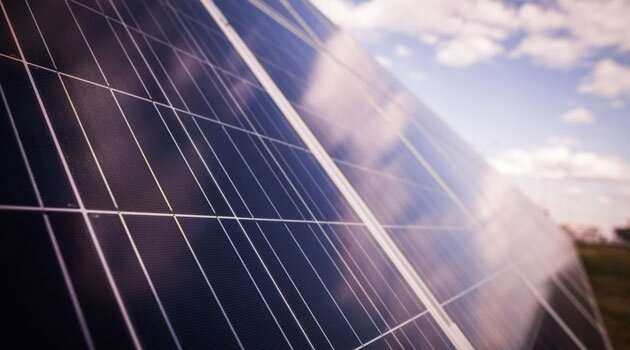Research on metallic nanoparticles may lead to improved solar cells

In a new study, a research group at Uppsala University explain their outstanding success in harvesting "hot electron holes." The results of their work can be used to improve solar cells, photochemical reactions, and photosensors. The scientific article is published in Nature Materials.
For some time, it has been known that certain metallic nanoparticles can absorb light and, in the process, generate positive and negative electrical charges. When these charges develop in light absorption, they are referred to as "hot." The negative charges are electrons and the positive ones are known as "electron holes," where an electron in the valence band (the electrons in the outer shell of the atom) is missing.
Hot electrons are a well-studied phenomenon and the manner in which they can accumulate in semiconductors (materials that conduct current less well than conductors, such as copper, but better than insulators, such as ceramics) is known. This extends their life, enabling them to be used in photocatalysts, solar cells and photosensors. A great deal less is known about hot holes.
Can be used in solar cells and in artificial photosynthesis
In the new study, the researchers have succeeded in collecting more than 80 percent of the hot holes in a semiconductor, which is three times as much as was previously thought possible. The process is astonishingly fast: it takes less than 200 femtoseconds (0.000000000002 s). The feasibility of collecting the charges in a semiconductor means that they can be used in solar cells and in artificial photosynthesis, for example to reduce carbon dioxide and produce hydrogen and oxygen from water.
The researchers had made the theoretical prediction that the accumulation of the positive charges would affect the dynamics of the negative charges as well. This hypothesis is confirmed by observations included in the new study. When light is absorbed and electric charges are produced, the "electron temperature" rises. Harvesting the hot holes makes the electronic heat capacity increase, modifying how far the electron temperature rises.
This indicates that it is possible to manipulate the energy distribution of the electrons by controlling the degree to which the electron holes are removed. This is a significant result since it enables, for example, regulation of the maximum voltage in a direct plasmonic solar cell (a solar cell that converts light into electrical energy using plasmons as the active photovoltaic material) or control of the reactive "window" in a photocatalytic process.
More information: Giulia Tagliabue et al. Ultrafast hot-hole injection modifies hot-electron dynamics in Au/p-GaN heterostructures, Nature Materials (2020). DOI: 10.1038/s41563-020-0737-1
Journal information: Nature Materials
Provided by Uppsala University




















